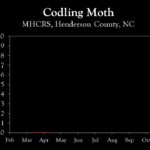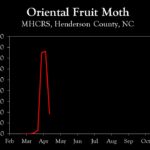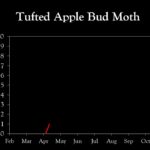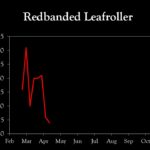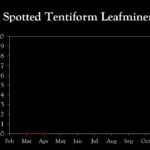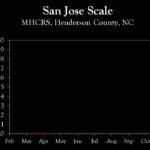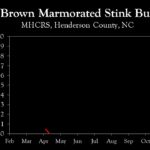WNC Orchard Insect Pest Populations – April 14, 2025
go.ncsu.edu/readext?1067612
en Español / em Português
El inglés es el idioma de control de esta página. En la medida en que haya algún conflicto entre la traducción al inglés y la traducción, el inglés prevalece.
Al hacer clic en el enlace de traducción se activa un servicio de traducción gratuito para convertir la página al español. Al igual que con cualquier traducción por Internet, la conversión no es sensible al contexto y puede que no traduzca el texto en su significado original. NC State Extension no garantiza la exactitud del texto traducido. Por favor, tenga en cuenta que algunas aplicaciones y/o servicios pueden no funcionar como se espera cuando se traducen.
Português
Inglês é o idioma de controle desta página. Na medida que haja algum conflito entre o texto original em Inglês e a tradução, o Inglês prevalece.
Ao clicar no link de tradução, um serviço gratuito de tradução será ativado para converter a página para o Português. Como em qualquer tradução pela internet, a conversão não é sensivel ao contexto e pode não ocorrer a tradução para o significado orginal. O serviço de Extensão da Carolina do Norte (NC State Extension) não garante a exatidão do texto traduzido. Por favor, observe que algumas funções ou serviços podem não funcionar como esperado após a tradução.
English
English is the controlling language of this page. To the extent there is any conflict between the English text and the translation, English controls.
Clicking on the translation link activates a free translation service to convert the page to Spanish. As with any Internet translation, the conversion is not context-sensitive and may not translate the text to its original meaning. NC State Extension does not guarantee the accuracy of the translated text. Please note that some applications and/or services may not function as expected when translated.
Collapse ▲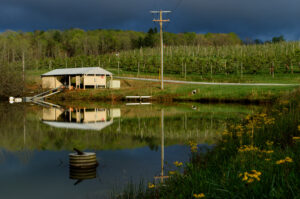 Petal fall is a critical time for management of plum curculio, and potentially oriental fruit moth and rosy apple aphid, the latter two dependent on what insecticides or mating disruption products were used before bloom. Also, if an insecticide targeting San Jose scale was not applied before bloom, petal fall to first cover falls in the timeframe for targeting this pest.
Petal fall is a critical time for management of plum curculio, and potentially oriental fruit moth and rosy apple aphid, the latter two dependent on what insecticides or mating disruption products were used before bloom. Also, if an insecticide targeting San Jose scale was not applied before bloom, petal fall to first cover falls in the timeframe for targeting this pest.
It is also important to note that most orchards consist of multiple apple cultivars that have differing times for petal fall, and precautions should be taken to avoid exposing bees to insecticide sprays or residues in flowers.
Petal Fall Sprays and Bee Safety
Minimizing risk of insecticide exposure to bees involves common sense and following restrictions on labels. The following guidelines should be used:
- Insecticides should not be applied before >90% of petals have fallen from blooms. Anytime before this stage risks exposing bees to insecticides. This is especially true when applying insecticides highly toxic to bees (see table below).
- Insecticides toxic to bees should not be applied before hives are removed from an orchard, regardless of the presence or absence of flowers.
- In orchards with multiple cultivars, avoid spraying insecticides until petal fall is complete on all cultivars. Attempting to spray trees that have completed petal fall but which are adjacent to those with blooms still present, will likely expose bees on blooming trees due to spray drift directly or indirectly (i.e., spray drift to flowers can contaminate nectar and pollen).
Insecticide Options for Petal Fall
Insecticide recommendations at petal fall are shown in the table below. Unfortunately, most are highly toxic to bees, especially those recommended for plum curculio – the key target at this time. Hence, the importance of waiting until >90% petal fall to make applications.
Plum curculio (PC): The key pest at this time, and the one which should be a strong basis for insecticide selection.
Oriental fruit moth (OFM): Another common pest, and the first generation can be easily managed with an insecticide applied at petal fall. However, in orchards using mating disruption and where dispensers were in place by before pink, insecticides are probably not necessary.
Rosy apple aphid (RAA): Rosy apple aphid control at petal fall is only necessary if an insecticide effective against this pest was not applied before bloom, at the tight cluster to pink stage.
San Jose scale (SJS): If an insecticide targeting San Jose scale was not applied before bloom, the window for making a post bloom spray extends from petal fall to first cover.
Preventive control of Mites: For those that prefer preventive control of European red mites, petal fall is the optimum timing if using Agri-Mek. The efficacy will noticeably decline the further from petal fall it is applied. If using insect growth regulators (e.g., Apollo, Savey, Zeal) or Envidor, it is recommended to wait until first or second cover.
Relative Efficacy of Insecticides for Petal Fall
(─ no activity, 1 = least effective, 5 = most effective)
| Insecticide (active ingredient) | PC | OFM | RAA | SJS | Toxicity to Bees |
| Actara (thiamethoxam) | 5 | 2 | 5 | ─ | Highly toxic |
| Assail (acetamiprid) | 3 | 4 | 5 | 4 | Moderately toxic |
| Belay (chlothianidin) | 4 | 3 | 5 | ─ | Highly toxic |
| Avaunt (Indoxacarb) | 4 | 4 | ─ | ─ | Highly toxic |
| Imidan (phosmet) | 4 | 4 | ─ | 1 | Highly toxic |
| Verdepryn (cyclaniliprole) | 4 | 5 | ─ | 3 | Highly toxic |
| Sevin (carbaryl) | 3 | 3 | ─ | 2 | Highly toxic |
| Voliam Flexi (thiamethoxam + chlorantraniliprole) | 5 | 5 | 5 | ─ | Highly toxic |
| Esteem (pyriproxyfen) | ─ | 4 | 2 | 5 | Slightly toxic |
| Centaur (buprofezin) | ─ | ─ | ─ | 5 | Slightly toxic |
| Movento (spirotetramat) | ─ | ─ | 5 | 4 | Moderately toxic |
Learn more about southeastern apple insect pests at the Apple Insect Management page.
2025 Average Weekly Trap Captures
| HENDERSON COUNTY | |||
| Insects per trap | |||
| Mar 31 | Apr 7 | Apr 14 | |
| Codling moth | 0.0 | 0.0 | 0.0 |
| Oriental fruit moth | 75.0 | 76.5 | 18.5 |
| Tufted apple bud moth | n/a | 0.0 | 1.0 |
| Redbanded leafroller | 21.0 | 6.0 | 4.0 |
| Obliquebanded leafroller | n/a | n/a | n/a |
| Lesser appleworm | n/a | n/a | n/a |
| Apple maggot (research orchards) | n/a | n/a | n/a |
| Apple maggot (abandoned orchard) | n/a | n/a | n/a |
| Brown marmorated stink bug (commercial) | n/a | n/a | n/a |
| Brown marmorated stink bug (unsprayed research orchard) | n/a | 0.5 | 0.0 |
| Spotted tentiform leafminer | 0.0 | 0.0 | 0.0 |
| Dogwood borer | n/a | n/a | n/a |
| Peachtree borer | n/a | n/a | n/a |
| Lesser peachtree borer | n/a | 2.0 | 3.0 |
| San Jose scale | 0.0 | 0.0 | 0.0 |
*Note that these averages illustrate only the timing of insect emergence and fluctuations in populations, and are not representative of population levels in any given orchard. The only way to have an accurate assessment of an individual orchard’s populations is to set up traps in that orchard.
2025 Accumulated Degree Days
| HENDERSON COUNTY | ||||
| Mar 31 | Apr 7 | Apr 14 | ||
| Codling moth (Biofix not yet reached) | n/a | n/a | n/a | |
| Oriental fruit moth (Biofix: March 17) | 125 | 263 | 304 | |
| Tufted apple bud moth (Biofix not yet reached) | n/a | n/a | n/a | |



